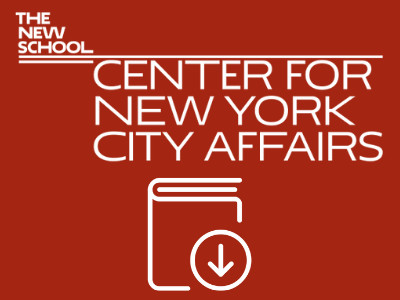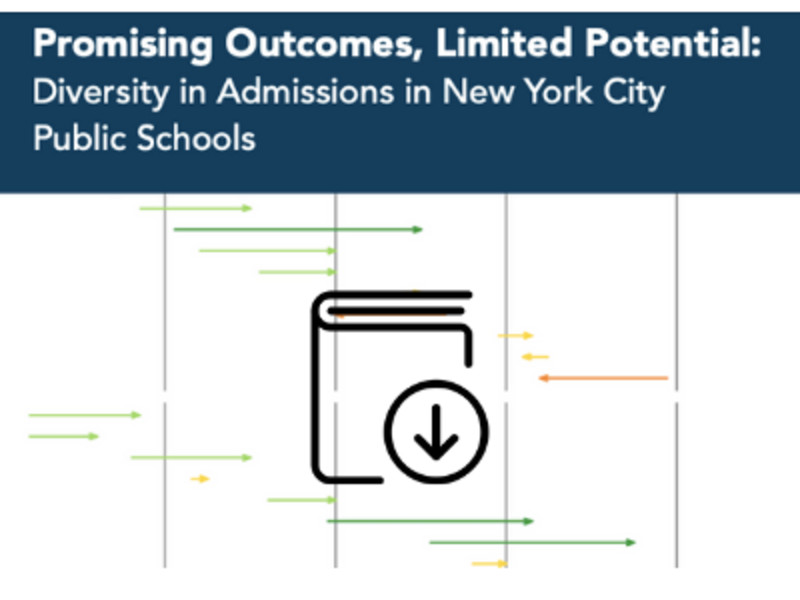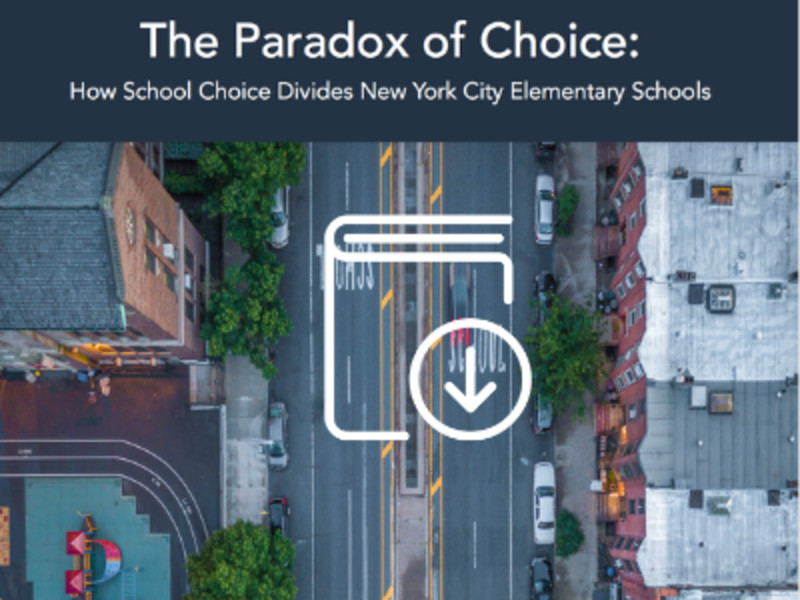Past Policy Reports

As a part of the Center for NYC Affairs at The New School, InsideSchools combines practical information for parents and cutting-edge policy research. Past research projects include a look at opportunities to support integrated schools in changing communities, an in-depth study of chronic absenteeism, a toolkit on implementing community schools, and several reports on gaps in math and science instruction.
The Calculus of Race and Class: A New Look at the Achievement Gap in New York City Schools (2017)
By Nicole Mader and Ana Carla Sant’anna Costa
Decades of national research have documented the “achievement gap” among students of different racial and ethnic groups as measured by their scores on standardized tests, with White and Asian students generally outperforming their Black and Hispanic peers. Now, a new tool developed by the Integration Project at the Center for New York City Affairs allows parents, educators, and policymakers to see just how large that gap is among students at each of the city’s approximately 900 public elementary schools, both district and charter. It also shows how strongly and how frequently this gap is moderated by the household incomes of students, even within the same schools.
No Heavy Lifting Required: New York City's Unambitious School 'Diversity' Plan (2017)
By Nicole Mader and Ana Carla Sant'Anna Costa
When the New York City Department of Education (DOE) released a long-awaited plan designed to increase diversity in the city's public schools, the Center for New York City Affairs crunched the numbers on these goals and found that they would not reflect meaningful, systemic change.
Integrated Schools in a Segregated City: Ten strategies that have made New York City elementary schools more diverse (2016)
By Clara Hemphill, Nicole Mader and InsideSchools staff
The staff of InsideSchools visited 80 elementary schools to find out how some formerly high-poverty schools have succeeded in attracting children from a range of races, ethnicities and income levels.
Segregated Schools in Integrated Neighborhoods: The City's Schools Are Even More Divided Than Our Housing (2016)
By Clara Hemphill and Nicole Mader
In multi-ethnic New York City, why are so many elementary schools segregated by race and class? New research demonstrates that school segregation is not always the result of housing patterns.
Rough Calculations: Will the Common Core Algebra Regents Exam Threaten NYC's Graduation Rates? (2015)
By Kim Nauer, Nicole Mader and Laura Zingmond
Nearly half of New York City students fail the Algebra 1 Regents exam on the first try. Thousands retake the exam multiple times, caught up in what teachers call the “Algebra whirlpool.”
What's Wrong with Math and Science in NYC High Schools? (2015)
By Clara Hemphill, Nicole Mader and Bruce Cory
While small schools have been successful in helping struggling students graduate, many do not offer the higher-level coursework that prepares students for college and careers. This policy brief offers recommendations based on the experiences of a number of successful schools.
A Better Picture of Poverty: What Chronic Absenteeism and Risk Load Reveal About NYC's Lowest-Income Elementary Schools (2014)
By Kim Nauer, Nicole Mader, Gail Robinson and Tom Jacobs with Bruce Cory, Jordan Moss and Aryn Bloodworth
Chronic absenteeism correlates with deep poverty--high rates of homelessness, child abuse reports, male unemployment, and low levels of parental education.
Scaling the Community School Strategy in New York City: A Systems Building Guide (2014)
By Kassa Belay, Nicole Mader and Laura Miller
A report detailing recommendations that can help sustain the city's new community schools initiative. NYC has long been home to some of the nation's most celebrated community schools but until recently there has been little support for this strategy at the city level.
Big Dreams for NYC's Youngest Children: The Future of Early Care and Education (2014)
By Kendra Hurley and Abigail Kramer with Myra Rosenbaum and Alison Miller
In October 2012, New York City launched EarlyLearnNYC, a plan that would upend its system for providing subsidized child care to working class and low-income families. The goal was to take the city’s sprawling assortment of child care programs—ranging from subsidized babysitting services to nationally accredited preschools—and blend them into a unified, holistic spectrum of early education services for children from 6 weeks through 4 years old.
Building Blocks for Better Schools: How the Next Mayor Can Prepare New York's Students for College and Careers (2013)
By Clara Hemphill, Kim Nauer, Andrew White and Thomas Jacobs
We analyze the successes and failures of Mayor Bloomberg's education initiatives—and proposes six key areas on which the next administration should focus attention and resources. A top priority: Make sure young children can read.
Creating College Ready Communities: Preparing NYC's Precarious New Generation of College Students (2013)
By Kim Nauer and Paul Tainsh with Andrew White, Tara Bahl, Sandra Salmans, Anna Schneider, Jared Carrano and Tom Jacobs
This report seeks to illuminate the latest college access efforts, and to shed new light on the complicated circumstances that allow some students to go to college and succeed—and so many others to fail.
Managing By The Numbers: Empowerment and Accountability in NYC's Schools (2010)
By Clara Hemphill and Kim Nauer with Helen Zelon, Thomas Jacobs, Alessandra Raimondi, Sharan McCloskey and Rajeev Yerneni
The report offers one of the first broad analyses of the Bloomberg administration's reorganization of school management, explaining how principal empowerment and school accountability are intertwined, and how this management structure is shaping children's lives. The report identifies important gains as well as troubling problems.
The New Marketplace: How Small-School Reforms and School Choice Have Reshaped NYC's High Schools (2009)
By Clara Hemphill and Kim Nauer with Helen Zelon and Thomas Jacobs
A report on the city's public high schools, revealing that Chancellor Joel Klein's high school reforms created valuable new opportunities but also caused collateral damage.



